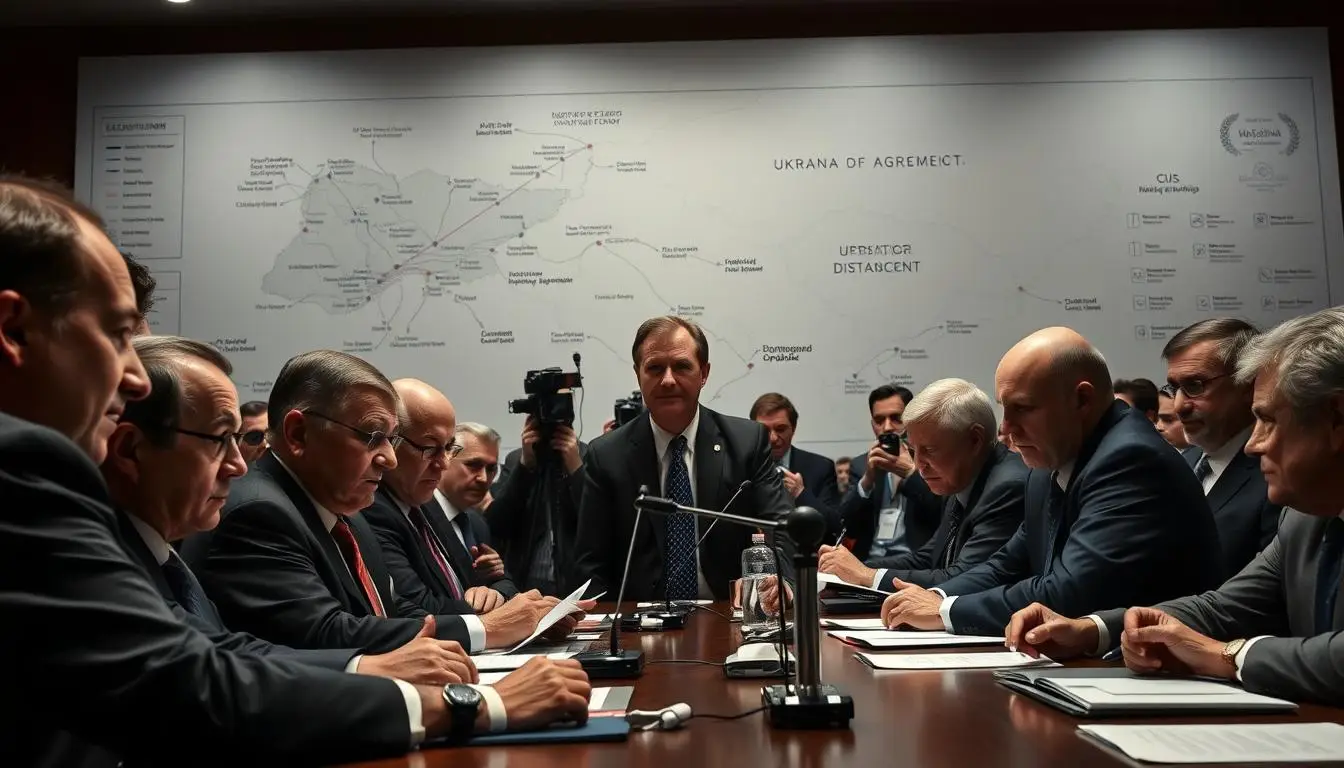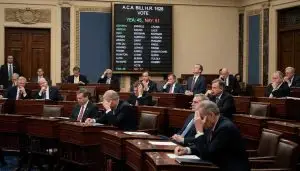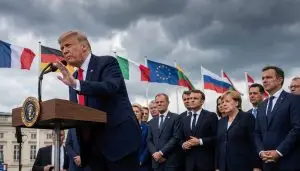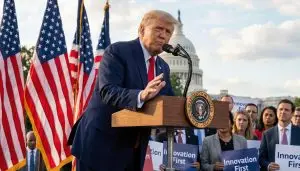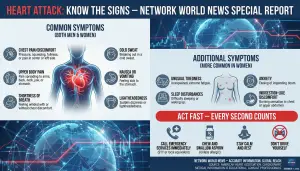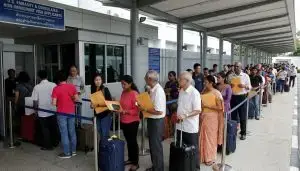New Ukraine Deal with Russia Trumps Urges Ukraine to Take Deal
Explore the pivotal New Ukraine Deal as global leaders weigh its impact on international relations and Ukraine’s future.

New Ukraine Deal with Russia Trumps Urges Ukraine to Take Deal
Click to summarize this article.
New Ukraine Deal: With Russia, Trump Urges Ukraine to Take Deal. President Donald Trump wants Ukraine to agree to a peace plan by Thanksgiving. He called it the right time in a radio chat with Brian Kilmeade. The White House said Thursday is the goal, not a strict deadline, for a 28-point plan.
Trump said he won’t lift U.S. sanctions on Russia yet. He told Ukraine it could lose land quickly. Ukrainian President Volodymyr Zelenskyy urged unity in a 10-minute speech, saying the choice might test Ukraine’s dignity.
Russian President Vladimir Putin said the U.S. plan could be a starting point for peace. But he warned that if Ukraine says no, Russia will use military means. This comes as Ukraine faces pressure at the front and after a deadly attack in Ternopil.
New Ukraine Deal Takeaways
- Trump presses for a Thanksgiving decision on a U.S.-crafted plan.
- The White House frames Thursday as a goal, not a hard deadline.
- Zelenskyy warns of a choice between dignity and a key partner.
- Putin says the outline could serve as a basis for peace, with threats if it is rejected.
- Frontline pressure and recent strikes heighten urgency for Ukraine diplomacy.
- Sanctions on Russia remain as talks proceed under tight timelines.
New Ukraine Deal: Thanksgiving Deadline, 28-Point Framework, and High-Stakes Diplomacy
The new Ukraine deal is under tight pressure and a crowded stage. Washington’s team gave a detailed plan to Kyiv and European capitals. This move aims to speed up talks and possibly change the game.
European media reported that Berlin was briefed on the draft early. This shows how fast things can move when big players agree. An early briefing in Berlin highlights how quickly Ukraine’s government got involved in diplomacy weeks ago.
Trump’s timeline: Thanksgiving goal and no plans to lift U.S. sanctions on Russia
Donald Trump’s team wants a deal by Thanksgiving. They also said U.S. sanctions on Russia won’t be lifted yet. This plan keeps the pressure on while giving talks time to grow.
The U.S.-crafted 28-point peace plan and the Thursday “goal” communicated to Kyiv
U.S. officials told Kyiv to aim for a Thursday deadline and to adopt a 28-point plan. This plan is designed to build trust and security step by step. It’s seen as a starting point, not a final agreement, to avoid rushing essential decisions.
- Twenty-eight points cover security guarantees and monitoring.
- A Thursday “goal” guides, but does not lock, the pace.
- Channels to Kyiv and Europe stay active through the week.
Putin had been adamant in the past about continuing the fighting unless he got the deal he wanted, so for him to offer this deal to Zelenskyy is a good opportunity.
Zelenskyy’s warning: choosing between “dignity” and a “key partner” amid battlefield pressure
President Volodymyr Zelenskyy said Ukraine faces a tough choice. He talked about dignity, alliances, and a challenging winter. His words highlight the need for the new deal to respect Ukraine’s limits while maintaining support.
“We will defend our dignity and work with partners, even in the toughest season.”
Zelenskyy’s team emphasized the importance of unity. They believe political agreements should be based on consent at home and trust abroad.
Putin’s stance: plan could form the basis of peace, with threats of military escalation if rejected
Vladimir Putin said the plan could be a starting point for talks. But he also warned of military action if it fails. This adds high stakes to the deal and makes choices harder for Ukraine and its allies.
- Signals of openness are tied to strict conditions.
- Escalation threats if talks stall.
- Pressure on Ukraine agreements to balance speed and safeguards.
Now, everyone is testing if they can turn a draft into a working agreement. They must do this without losing public support or losing ground on the battlefield.
Reactions, Risks, and Reported Terms Shaping Ukraine Agreements
New claims about a framework have sparked significant diplomatic activity in Ukraine. Talks of trade agreements are growing, with officials weighing costs and timelines. They also consider the strain on the battlefield.
Experts say international relations in Ukraine are tied to security aid and energy shocks. Ukraine’s foreign policy must also keep public trust at home.
Alleged plan details: Donbas concessions, Crimea recognized de facto Russian, NATO bar, and military cap
Reported terms suggest significant concessions in the east. The Donbas would fall under Moscow’s control, and Kyiv would withdraw from the contested lines. A military cap would apply nationwide.
Crimea would be seen as de facto Russian, even by Washington. NATO membership would be off the table. Analysts warn that such moves could change Ukraine’s international relations and limit future trade agreements.
Ceasefire risks are also high. Many truces fail early, and bigger failures come months later. A detailed look at possible freeze scenarios is outlined in this analysis of a potential peace plan. It includes how economic statecraft may anchor any deal.
Kyiv’s engagement: Zelenskyy’s calls with U.S. and European leaders; coordination via national security advisors
President Volodymyr Zelenskyy has increased talks with Washington and key European capitals. His calls with U.S. leaders focused on a realistic path to peace. They also aimed to tighten coordination among national security advisors.
London, Berlin, and Paris also weighed in. They aimed to align expectations with Ukraine’s foreign policy. A crisis update on air defenses and long-range threats, including recent strikes on energy sites, appeared in this latest conflict briefing. It highlights the pressure on civilian infrastructure.
Contested authorship: Rustem Umerov’s denial of approving points and role clarification
Disputes over who shaped the 28 points added fresh uncertainty. A senior U.S. account suggested broad agreement after edits. But Defense Minister Rustem Umerov publicly denied granting approvals.
He said his trip was technical, limited to arranging meetings and preparing dialogue. The episode sharpened questions about process and transparency inside Ukraine’s foreign policy. Trade agreements and security terms overlap in Ukraine.
To gauge how stakeholders might accept or walk away from a package, a futures tool models items under territory, security, economy, and justice. Its thresholds, tied to BATNA logic, are detailed in this overview of the negotiation simulator. It offers a structured lens on international relations in Ukraine.
Moscow’s messaging: Kremlin claims no official plan received; urges “responsible decision”
The Kremlin kept its stance guarded. Spokesperson Dmitry Peskov said Moscow had not received an official text and was learning details from the media.
While contacts with U.S. counterparts continued, he emphasized that nothing substantive was under discussion. The call for a “responsible decision” placed added weight on Ukraine’s diplomacy. This is at a moment when international relations with Ukraine and security guarantees remain in flux.
Ukraine faces domestic headwinds and frontline losses near Donetsk. These pressures color public debate, test Ukraine’s foreign policy resilience, and complicate how any trade agreements Ukraine might support postwar recovery.
New Ukraine Deal Conclusion
The New Ukraine Deal is a test of will and timing. Washington set a Thanksgiving goal for Kyiv to consider a 28-point framework. At the same time, U.S. sanctions on Russia remain in place.
Former President Donald Trump added pressure by predicting quick Ukrainian losses. This urgency comes as strikes on civilians and setbacks near the front have defined the week. The stakes now go beyond the battlefield.
President Volodymyr Zelenskyy called this week one of the hardest. He had to balance national dignity with reliance on a key partner. He and his team worked closely with U.S. and European leaders.
Moscow sent mixed signals. Vladimir Putin said the U.S. outline could serve as a basis for peace. Yet, he warned of escalation if Kyiv refuses. The Kremlin claims it has not received an official plan, showing how narrative control and timing matter.
Reported terms include Donbas concessions and de facto recognition of Crimea as Russian. There’s also a NATO bar and a cap on Ukraine’s armed forces. These points mirror Russian aims and worry European capitals.
Disputed authorship around Defense Minister Rustem Umerov’s role and corruption probes in Kyiv add friction. Active information operations also complicate government agreements with Ukraine. For more on the 28-point framework and related proposals, see this full plan overview and this snapshot of reported terms.
Negotiations will likely take longer than a week. The outcome will shape Ukraine’s foreign policy and European security. It will test if political agreements Ukraine can deliver a credible peace.
If the New Ukraine Deal advances, it will set a benchmark for future agreements. It will be measured by ending fire, protecting sovereignty, deterring aggression, and unlocking reconstruction.

